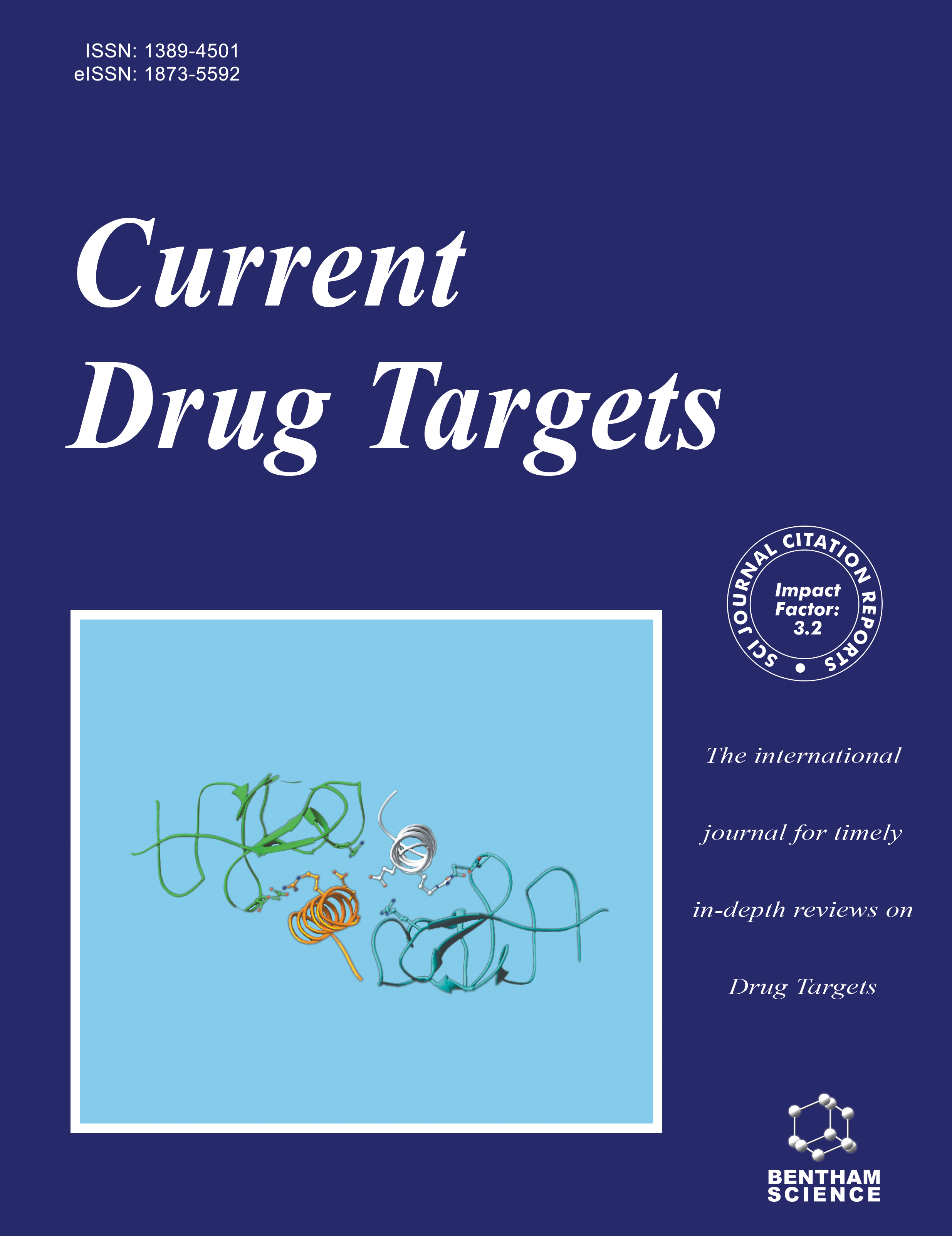- Home
- A-Z Publications
- Current Drug Targets
- Previous Issues
- Volume 18, Issue 14, 2017
Current Drug Targets - Volume 18, Issue 14, 2017
Volume 18, Issue 14, 2017
-
-
Mechanism and Potential Inhibitors of GlmU: A Novel Target for Antimicrobial Drug Discovery
More LessAuthors: Rashmi Sharma and Inshad A. KhanBackground: Multidrug resistant Gram negative pathogens pose a persistent threat to the health care system and require investigation of new targets and molecules for the development of antibiotics to treat infections caused by MDR bacterial pathogens. Objective: It is essential to work on multidisciplinary approaches and diverse strategies for developing new compounds acting on novel antibacterial targets. N-acetylglucos Read More
-
-
-
Recent Advances in Nanosystems and Strategies for Managing Leishmaniasis
More LessBackground: Parasitic infection such as leishmaniasis, a neglected tropical disease, presents a significant global burden which is responsible for high mortality rate especially in less developed countries. Its intracellular nature and disseminated locations of parasite, limited number of chemotherapeutic agents, increasing incidences of resistance to first line drugs and toxicities, pose a great challenge to formulation scie Read More
-
-
-
Phosphoinositide-3-kinases as the Novel Therapeutic Targets for the Inflammatory Diseases: Current and Future Perspectives
More LessAuthors: Preeti Vyas and Divya VohoraObjective: To review the role of PI3K/AKT/mTOR signalling pathway, and the current and future prospects of targeting PI3Ks for various diseases, like malignant, autoimmune, inflammatory, cardiovascular, neurological disorders etc., laying special emphasis on the inflammatory diseases and associated cellular responses. Background: Recent findings have publicized phosphoinositide-3-kinases (PI3Ks) as novel therapeutic targ Read More
-
-
-
Hydrogen Sulfide and Inflammatory Joint Diseases
More LessAuthors: Elena F. Burguera, Rosa Meijide-Failde and Francisco J. BlancoBackground: Rheumatoid arthritis (RA) and osteoarthritis (OA) are widespread rheumatic diseases characterized by persistent inflammation and joint destruction. Hydrogen sulfide (H2S) is an endogenous gas with important physiologic functions in the brain, vasculature and other organs. Recent studies have found H2S to be a mediator in inflammatory joint diseases. Objective: This review summarizes the recent literature Read More
-
-
-
The Smart Programmable CRISPR Technology: A Next Generation Genome Editing Tool for Investigators
More LessAuthors: Chiranjib Chakraborty, Seong L. Teoh and Srijit DasBackground: The present era is fast experiencing rapid innovation in the genome-editing technology. CRISPR Cas9-mediated targeted genetic manipulation is an easy, cost-effective and scalable method. As a result, it can be used for a broad range of targeted genome engineering. Objective: The main objective of the present review is to highlight the structural signature, classification, its mechanism and application f Read More
-
-
-
Pro-Inflammatory Cytokines: New Potential Therapeutic Targets for Obesity-Related Bone Disorders
More LessAuthors: Tiantian Wang, Chengqi He and Xijie YuBackground: Obesity was traditionally considered as a positive regulator on the strength of bone. With the in-depth study, obesity is considered as a major risk factor for osteoporosis. Some proinflammatory cytokines such as tumor necrosis factor-alpha (TNF-α) and interleukin-6 (IL-6) are the factors that fat uses to negatively regulate bone metabolism. Objective: This review was aimed to summarize and critically discuss the c Read More
-
-
-
A Review on Plasmodium falciparum-Protein Farnesyltransferase Inhibitors as Antimalarial Drug Targets
More LessBackground: Protein farnesyltransferase (PFT) inhibitors have emerged as a potent target for the malaria treatment caused by the Plasmodium falciparum (Pf) parasite. Objective: To explore the various scaffolds which are active against Pf-PFT target. Result: Seven inhibitor scaffolds based on ethylenediamine, peptidomimetic, benzophenone, benzamide, tetrahydroquinoline, naphthyridine and oxy-tetrahydroquinoline, have be Read More
-
Volumes & issues
-
Volume 26 (2025)
-
Volume 25 (2024)
-
Volume 24 (2023)
-
Volume 23 (2022)
-
Volume 22 (2021)
-
Volume 21 (2020)
-
Volume 20 (2019)
-
Volume 19 (2018)
-
Volume 18 (2017)
-
Volume 17 (2016)
-
Volume 16 (2015)
-
Volume 15 (2014)
-
Volume 14 (2013)
-
Volume 13 (2012)
-
Volume 12 (2011)
-
Volume 11 (2010)
-
Volume 10 (2009)
-
Volume 9 (2008)
-
Volume 8 (2007)
-
Volume 7 (2006)
-
Volume 6 (2005)
-
Volume 5 (2004)
-
Volume 4 (2003)
-
Volume 3 (2002)
-
Volume 2 (2001)
-
Volume 1 (2000)
Most Read This Month
Article
content/journals/cdt
Journal
10
5
false
en


